Costa Rica's Favorite Meal: The Casado
February 7, 2025
Costa Rica is a fabulous destination for luxury travelers, as well as seniors, couples, and families, not least because of its many excellent dining options.…
Read This Post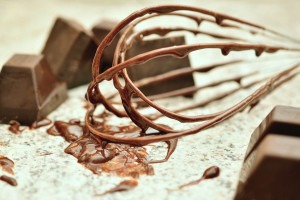 Happy World Chocolate Day! Surely one of the best food days of the year, World Chocolate Day celebrates this wonderful product. Whether you like yours hot or cold, liquid or solid, bittersweet or milk, chocolate remains one of the most beloved of foods.
Happy World Chocolate Day! Surely one of the best food days of the year, World Chocolate Day celebrates this wonderful product. Whether you like yours hot or cold, liquid or solid, bittersweet or milk, chocolate remains one of the most beloved of foods.
We’re feting it ourselves with a delicious chocolate mouse recipe, below, but first, let’s talk about chocolate!
 What exactly is chocolate? Chocolate is made from the cocoa (or cacao) bean. Cocoa trees have fruit on them, called pods, and these pods contain the beans (seeds) that are used to make cocoa.
What exactly is chocolate? Chocolate is made from the cocoa (or cacao) bean. Cocoa trees have fruit on them, called pods, and these pods contain the beans (seeds) that are used to make cocoa.
It is indigenous to Mesoamerica, and can be traced back to the ancient civilizations of modern-day Mexico, including the Mayans, who used it to make a common beverage, and the Aztecs, who used it as currency. The word chocolate, in fact, is traced back to the Nahuatl (or Aztec) word “chocolātl.” Consensus is that these ancient cultures consumed it as a bitter beverage, much like coffee, rather than using it to make decadent desserts, and that it was sometimes considered to have aphrodisiacal powers.
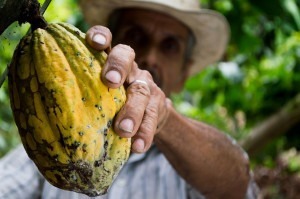 It is unclear who first brought chocolate to Europe. But whether it was Columbus, Cortes, or other colonizers, chocolate first became popular at the Spanish court before spreading to the rest of Europe. By the late 1500s, it was enormously popular, and its popularity brought about the age of the cacao plantation.
It is unclear who first brought chocolate to Europe. But whether it was Columbus, Cortes, or other colonizers, chocolate first became popular at the Spanish court before spreading to the rest of Europe. By the late 1500s, it was enormously popular, and its popularity brought about the age of the cacao plantation.
The bleak side of chocolate’s history is the spread of slavery that it spawned in order to run cultivate and harvest the cocoa beans. Chocolate’s popularity in the 16th, 17th, and 18th centuries, coupled with the depletion of Mesoamerican workers due to disease and genocide, saw the Dutch, French, and English colonizers turned to African slave labor to do the hard manual labor required to produce cocoa.
See a recipe for chocolate soufflé from our cooking vacation in Tours, France.
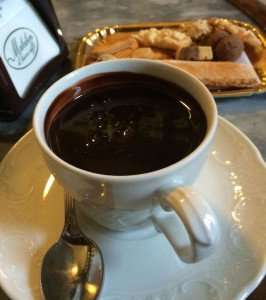 All a thing of the past? No. Unfortunately, cocoa is still produced using child and slave labor, mostly on the western coast of Africa, and this cocoa in turn supplies some of the most known chocolate candy makers in America and the world.
All a thing of the past? No. Unfortunately, cocoa is still produced using child and slave labor, mostly on the western coast of Africa, and this cocoa in turn supplies some of the most known chocolate candy makers in America and the world.
So how can you avoid supporting, albeit unwittingly, unethically produced cocoa? For starters, look for the Fair Trade label when purchasing chocolate. And if you want to learn more, or help more, you check out the website for Slave Free Chocolate.
 You probably have heard of different types of chocolate, such as milk, dark, and white. You may even have noticed strange percentages on the chocolate you buy at the store. But what exactly is the difference?
You probably have heard of different types of chocolate, such as milk, dark, and white. You may even have noticed strange percentages on the chocolate you buy at the store. But what exactly is the difference?
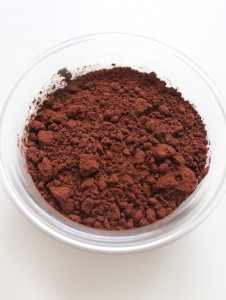 First, cocoa solids ground into powder make up the raw ingredient, and it is mixed with fat, called cocoa butter, and (usually) sugar in different quantities to produce solid chocolate. In milk chocolate, milk is added (either in powdered, liquid, or condensed form). Hence the name!
First, cocoa solids ground into powder make up the raw ingredient, and it is mixed with fat, called cocoa butter, and (usually) sugar in different quantities to produce solid chocolate. In milk chocolate, milk is added (either in powdered, liquid, or condensed form). Hence the name!
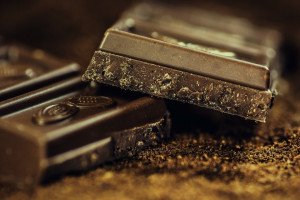 Dark chocolate, or “plain” chocolate, is at its most basic a mix of cocoa solids (powder) and butter. If it is unsweetened, that is it. If sweetened, it will also contain sugar. The amount of cocoa will vary from 70 to 100 percent, and these are the percentages you will see on some chocolate bars. The amount of sugar may vary also, resulting in the labels “semisweet” or “bittersweet.”
Dark chocolate, or “plain” chocolate, is at its most basic a mix of cocoa solids (powder) and butter. If it is unsweetened, that is it. If sweetened, it will also contain sugar. The amount of cocoa will vary from 70 to 100 percent, and these are the percentages you will see on some chocolate bars. The amount of sugar may vary also, resulting in the labels “semisweet” or “bittersweet.”
White chocolate does not contain cocoa solids, just cocoa butter, sugar, and milk.
Each country has its own rules on what can be labeled “chocolate,” including what percentage of ingredients can be, well, not cocoa. If you are a cocoa purist, make sure to check the label!
 Prep time: 15 minutes
Prep time: 15 minutes
Cook time: 3 minutes
Cook method: Melt
Serves: 6
 1. Melt the chocolate in a microwave-safe bowl (or in the top of a double boiler over medium heat). Stir to a smooth consistency and set aside.
1. Melt the chocolate in a microwave-safe bowl (or in the top of a double boiler over medium heat). Stir to a smooth consistency and set aside.
2. Place the cream in a large chilled mixing bowl, and whisk on high until peaks form.
3. In a clean, stainless steel bowl, whisk the egg whites until soft peaks form, approximately 3-4 minutes if using a stand mixer. Add the sugar a tablespoon at a time, still whisking, until stiff peaks form, about 2 to 3 minutes more.
4. Whisk a quarter of the whipped cream into the chocolate, mixing vigorously.
 5. Add half the egg whites to the chocolate mixture, folding gently, then add it all back with the rest of the egg whites and the rest of the whipped cream. Fold gently until it is thoroughly incorporated.
5. Add half the egg whites to the chocolate mixture, folding gently, then add it all back with the rest of the egg whites and the rest of the whipped cream. Fold gently until it is thoroughly incorporated.
6. Place in 6 individual glasses or ramekins, or in a single serving dish, and chill for at least 4 hours.
7. Serve on its own, or top it with whipped cream, chocolate shavings, mint leaves, or berries – as you prefer!
By Peg Kern
Sign up to receive our newsletter, which includes travel tips, recipes, promotions, and information on our best cooking vacations.
Find more photos, videos, food facts, and travel stories from The International Kitchen on Facebook, YouTube, Instagram.